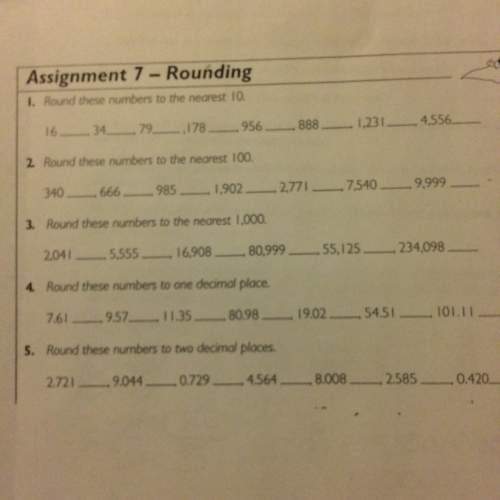
Mathematics, 11.03.2020 21:57, dtrejos
Suppose that we don't have a formula for g(x) but we know that g(1) = −1 and g'(x) = x2 + 15 for all x.
(a) Use a linear approximation to estimate g(0.9) and g(1.1).
(b) Are your estimates in part (a) too large or too small? Explain.
The slopes of the tangent lines are positive and the tangents are getting steeper, so the tangent lines lie above the curve. Thus, the estimates are too large.
The slopes of the tangent lines are positive and the tangents are getting steeper, so the tangent lines lie below the curve. Thus, the estimates are too small.
The slopes of the tangent lines are positive but the tangents are becoming less steep, so the tangent lines lie above the curve. Thus, the estimates are too large.
The slopes of the tangent lines are positive but the tangents are becoming less steep, so the tangent lines lie below the curve. Thus, the estimates are too small.

Answers: 1
Other questions on the subject: Mathematics

Mathematics, 21.06.2019 20:00, cutecupcake678
Apatient is to be given 35 milligrams of demerol every 4 hours. you have demerol 50 milligrams/milliliter in stock. how many milliliters should be given per dose?
Answers: 2


Mathematics, 22.06.2019 04:40, sweetycakes6994
Experimental versus theoretical probability. someone me
Answers: 1
Do you know the correct answer?
Suppose that we don't have a formula for g(x) but we know that g(1) = −1 and g'(x) = x2 + 15 for all...
Questions in other subjects:






Mathematics, 07.05.2020 00:03


Mathematics, 07.05.2020 00:03

Mathematics, 07.05.2020 00:03

Advanced Placement (AP), 07.05.2020 00:03







